Teaching Kids at Home: A Head Start for Success
Children thrive in environments that encourage curiosity and exploration. At home, set up a designated learning area equipped with age-appropriate books, art supplies, puzzles, and sensory toys. Keep this area organized and inviting so that your child feels excited to spend time there.
Pro Tip: Rotate toys and learning materials weekly to keep things fresh and engaging.
2. Establish a Daily RoutineYoung children feel secure when they have a predictable routine. Structure your day with time for learning, play, meals, and rest. Include a mix of structured activities, such as reading time or craft projects, and unstructured free play to let their imaginations run wild.
Sample Routine:
- 8:00 AM – Breakfast and morning circle (songs, weather, daily goals)
- 9:00 AM – Learning activity (letters, numbers, or shapes)
- 10:00 AM – Outdoor play
- 11:00 AM – Art or sensory activity
- 12:00 PM – Lunch
- 1:00 PM – Quiet time or nap
- 2:00 PM – Storytime and discussion
- 3:00 PM – Free play
Reading is a cornerstone of early education. Read with your child daily, and encourage them to interact with the story by asking questions or making predictions. Use simple alphabet games to build letter recognition and phonics skills.
Activity Idea: Create a "letter scavenger hunt" by hiding alphabet cards around the house. Let your child find them and match them to corresponding objects (e.g., "A is for apple").
4. Make Learning Hands-OnChildren learn best by doing. Incorporate hands-on activities that engage multiple senses. For example:
- Use playdough to form letters and numbers.
- Explore math concepts with measuring cups and cooking ingredients.
- Practice sorting and categorizing using buttons, toys, or everyday items.
Social-emotional development is just as crucial as academics. Use role-playing games to teach empathy, cooperation, and problem-solving. Encourage your child to express their feelings and validate their emotions.
Game Idea: Play "Feelings Charades" where you act out emotions like happiness, sadness, or excitement, and have your child guess and discuss the feelings.
6. Incorporate Outdoor ExplorationNature provides endless opportunities for learning. Take your child outside to observe plants, animals, and weather. You can also use outdoor time for physical activities like jumping, running, and climbing to support gross motor development.
Activity Idea: Go on a "shape walk" and find objects that match geometric shapes (e.g., a round rock for a circle, a rectangular door).
7. Partner with Your Local Head Start ProgramEven if you're teaching at home, Head Start programs offer valuable resources and support. Many programs provide access to educational materials, family workshops, and developmental screenings. Reach out to your local Head Start center to see how they can enhance your child's learning journey.
8. Celebrate MilestonesAcknowledge your child's achievements, no matter how small. Celebrating milestones builds confidence and motivates them to keep learning. Create a "celebration board" to showcase their artwork, certificates, or photos of proud moments.
Teaching kids at home can be an incredibly rewarding experience. By integrating Head Start principles into your daily routine, you're not only preparing your child for school but also fostering a lifelong love of learning. Remember, every small step you take brings your little one closer to a bright and successful future.
When you subscribe to the blog, we will send you an e-mail when there are new updates on the site so you wouldn't miss them.



Comments